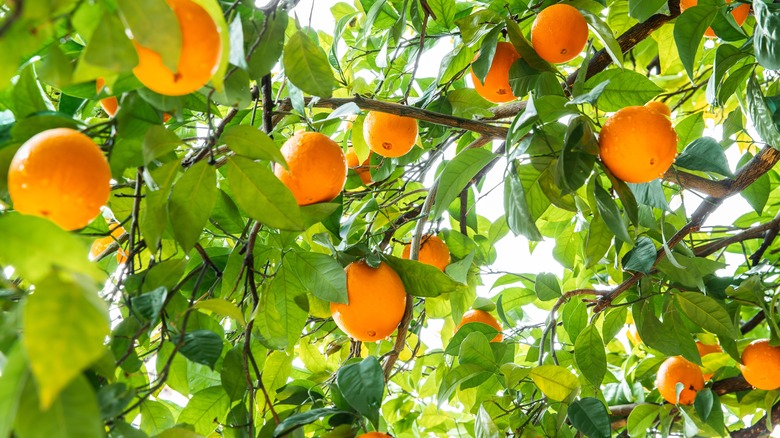Are Oranges Named After The Color?
What came first, the chicken or the egg? While that rabbit hole has been well-explored for years, a similar food-related quandary has people puzzled about oranges. As anyone who has taken an elementary school art class probably knows, orange is a mixture between red and yellow. It's also, of course, a beloved citrus fruit, used in everything from orange juice to orange chicken.
Although oranges are probably the most well-known food with the same name as their color, they're not the only ones. Blueberries, peaches, and blackberries are some of the more obvious ones, but did you know that cherries were also named in accordance with color? According to Thrive Cuisine, cherries get their name from the 12th-century French word "cerise," although it's unclear if the cherry red color or the fruit was named first. According to Neon-Colors, there are plenty of colors clearly named after fruits — wild watermelon, laser lemon, and atomic tangerine are all official Crayola colors.
However, the background of the word is a little more clearly defined when it comes to oranges. So which came first, the fruit or the color?
The color is named after the fruit
The fruit came first. According to Mental Floss, the English name for oranges got its roots from the Sanskrit word "nāranga," which means "orange tree," but the word "orange" wasn't used in English until the 1300s. Interestingly enough, the orange fruit is believed to have come from China and is still called a "China apple" in languages like Dutch and Ukrainian, reports The Culture Trip.
But the 1300s English use of the word orange still doesn't exactly reflect how we use it today. An early Anglo-Norman text shows that orange was initially used as an adjective to describe the bitterness of an orange peel, The Guardian shares. It wasn't until 1512 that the word orange was used in a will to describe the color; before that, people had used "yellow-red" or "saffron," according to Literary Hub. While saffron may have been the closest color at the time, it's actually pretty different than the orange we know today. According to the International Association of Color Manufacturers, saffron is "a reddish-brown or golden yellow" and is categorized as a yellow hue. Imagine if the word for orange had never emerged — would saffron and black be our Halloween colors?
The Culture Trip notes another reason orange claimed the color is that other potential candidates, like pumpkin and carrots, weren't discovered yet (well, carrots were around, but they were exclusively purple at the time). Who knew oranges had a competitive side?

